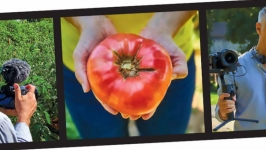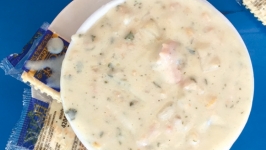Nicole and Mark Jolly, Creators of "How Does It Grow"
IF YOU’RE LIKE MOST AMERICANS, YOU EAT CORN ON THANKSGIVING. You might buy it frozen and drop it into a corn pudding recipe or just pop open a can and serve it creamed. You devour it, along with a dozen other dishes, around a holiday table with family and friends.
But have you ever considered the copious amount of silk that was stuffed into garbage trucks when those kernels were harvested and processed for the freezer section? Chances are you haven’t. Unless, of course, you are Nicole and Mark Jolly, the Point Breeze—based creators of the hit YouTube series How Does it Grow.
A British journalist born to an Iranian mother, Mark has always had an inquiring palate. When he met Nicole, also a journalist specializing in food writing, the two merged lives and got married a decade ago. Their shared obsession with all things edible only grew after their wedding. Over years of cooking and writing, the couple realized there’s a lot people who don’t know where food comes from. Their solution? Create a video series focusing on just that.
How Does it Grow is YouTube’s most-watched channel dedicated to agricultural literacy. The program gets 1.5 million monthly views and boasts more than 250,000 subscribers. As their popularity has grown, the Jollys remain focused on a singular mission: educating viewers about agriculture. Their How Does it Grow videos have covered a plethora of produce, telling the story of one crop at a time.
Mark’s goal is to pack each episode so full of surprising well-researched facts and information that viewers will ask themselves, “How did I not know that?” Nicole quotes natural historian Sir David Attenborough to shed light on her own motivation: “If people lose knowledge, sympathy, and understanding of the natural world, they’re going to mistreat it. No one will protect what they don’t care about.”
It’s her conviction that when people learn more about organic farming and other sustainable practices they care more, which can lead to a better food system.
They both think the series’ secret to success is distilling complex ideas into easily digestible, visual stories. And they’ve made an impressive library of these stories covering peaches to tomatoes, pumpkin to lavender.
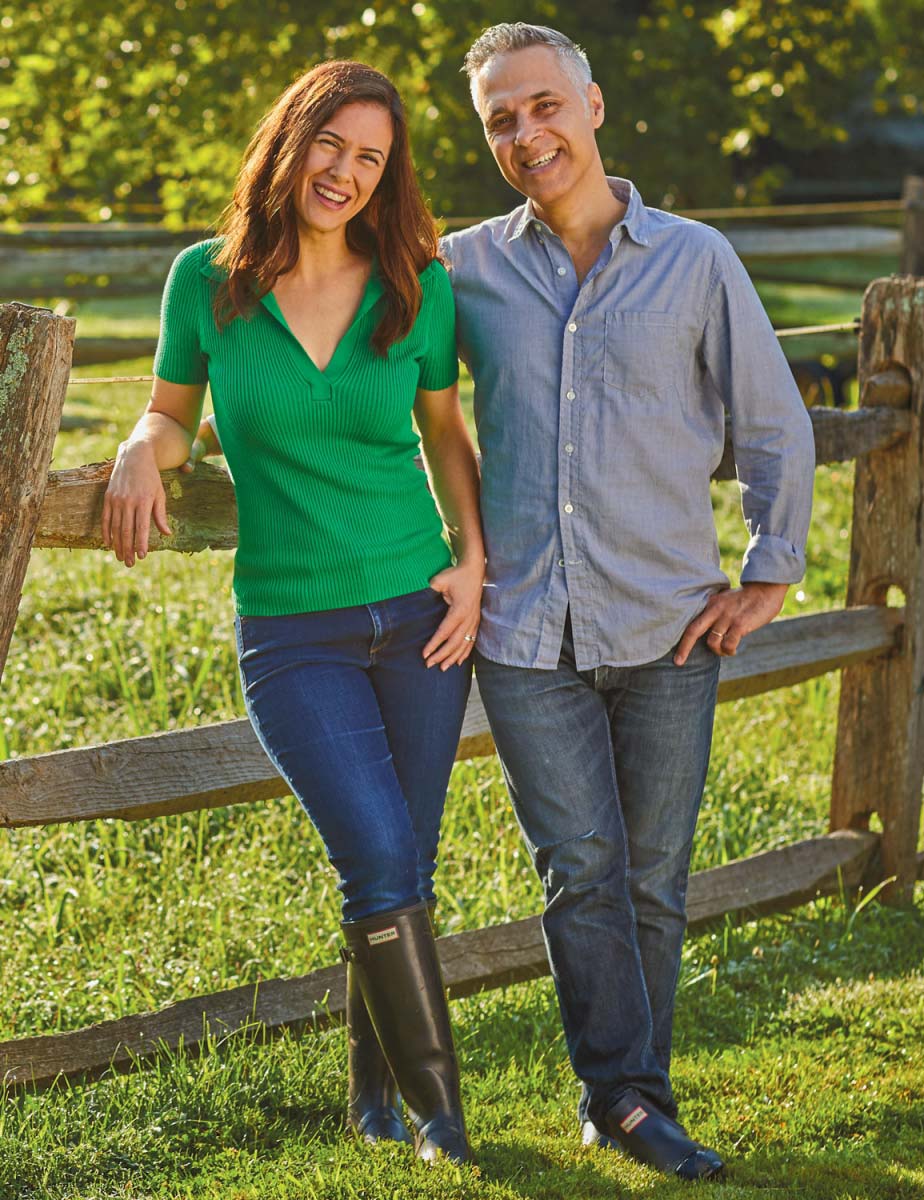
Nicole and Mark Jolly on the set of their hit You Tube show, How Does It Grow?
“If people lose knowledge, sympathy, and understanding of the natural world, they’re going to mistreat it.”
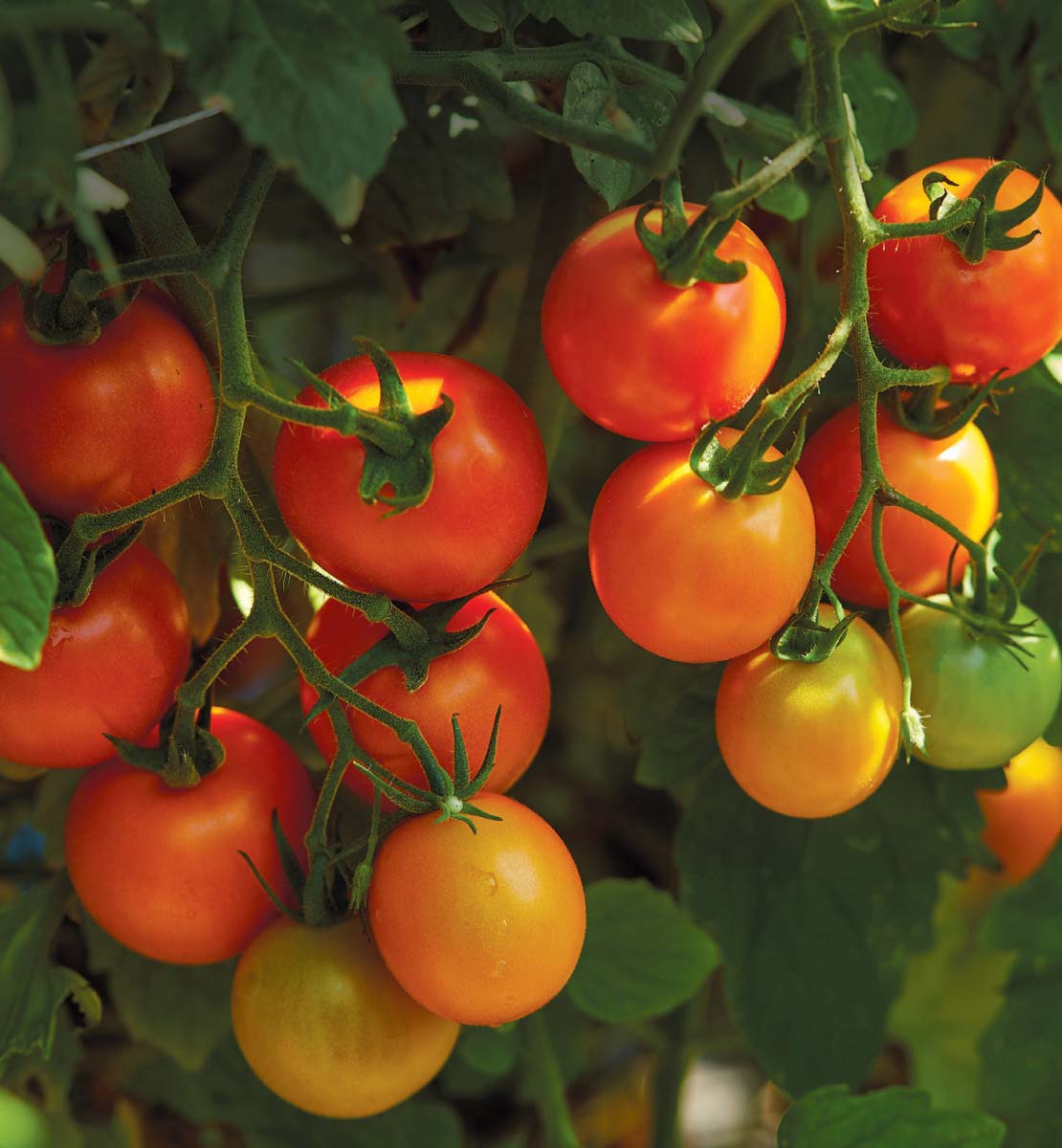
GETTING STARTED
In the series’ formative days the Jollys relied on Kickstarter for funds and employees filmed and edited the episodes. It quickly became apparent that in order to afford to keep the series going they’d have to start doing this work themselves. Mark took his preexisting photography talent and expanded into the art of cinematography. Meanwhile, Nicole studied professional video editing software and created something of production studio right in their home office. Within a year, the two were fully capable of producing their own How Does it Grow episodes, start to finish.
The heavy workload also came at a challenging time in Nicole’s life. “I was pregnant with my son Julian while filming our cranberry and apple episodes, and we filmed potatoes when he was just 5 months old. I remember pumping breast milk in between scenes, slumped low in the backseat of our car. I was used to working intensely but that felt like a bit too much,” she says.
Thankfully, the business has evolved since then. Today, How Does it Grow is funded in three ways: through donations from the audience via a membership program on the YouTube platform; through advertising money they earn from Google/YouTube; and through commercial sponsorships—similar to the way a PBS show is underwritten. For example, the chickpeas episode was sponsored by Sabra and Prego sponsored the tomato show.
Working with sponsors is fraught territory for those with journalism backgrounds, and the Jollys have given much thought about how to maintain integrity while keeping the lights on. “We only work with sponsors who have close relationships with the farms that provide their produce,” says Nicole. “And we have a policy that’s rather unique in the YouTube world: We maintain absolute editorial independence.”
This may seem like a small detail but in the world of YouTube, where it’s commonplace to see stars hawking their sponsors’ products, who shapes the message is key. The Jollys never show their scripts and sponsors do not approve edits. The couple’s roots in journalism inform their approach: to tell the story in the way that best serves their audience.

This summer, How Does It Grow fi lmed at SIW Vegetable farm in Chaddsford, PA
 Tomatoes were the subject of a recently filmed How Does It Grow?
Tomatoes were the subject of a recently filmed How Does It Grow?
KEEPING IT REAL
The Jollys’ desire to stick to YouTube is also a matter of creative control. Over the course of making How Does it Grow, the Jollys have been approached by three television production companies about turning the show into a more conventional TV series.
“One company wanted to pair me with a well-known co-host,” says Nicole. “He was a farmer who starred on The Bachelor.” A few months later, her would-be co-star was in the headlines for all the wrong reasons: He was arrested for a fatal hit and run while driving drunk, says Nicole. The couple never moved ahead with these proposals fearing it would lead them in a direction they did not want. “We’re not looking to manufacture any drama,” laughs Nicole. “Farming has enough built in!”
Working with traditional networks could mean compromise. “Our purpose with How Does it Grow is pure,” says Nicole. “We want to bring people closer to the sources of their food—and television is rarely pure.” YouTube also allows connections with their audience. Underneath each video there are hundreds, sometimes thousands, of comments. “I’m able to get real-time feedback,” says Nicole. “It’s exhilarating.”
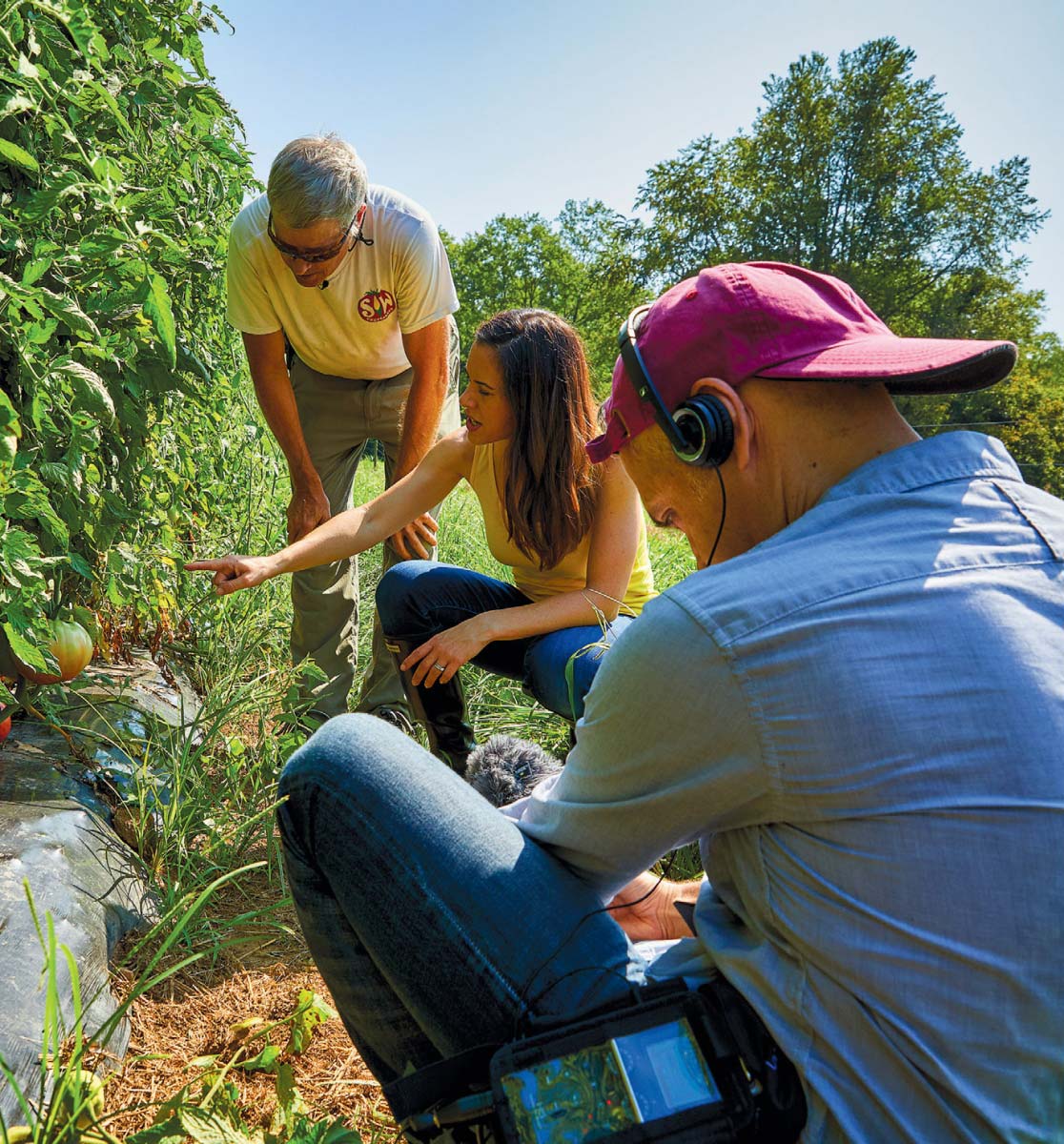 Nicole and Mark Jolly talk to farmer, H.G. Haskell
Nicole and Mark Jolly talk to farmer, H.G. Haskell
PAYING RESPECT
Despite the breezy feel of the episodes, full of lush cinematography and shots of Nicole slow-motioning across fields and high-fiving workers while popping all manner of food into her mouth, the Jollys pay special homage to those who do the hard labor. In response to the rash of immigration debates taking hold on television and in social media news feeds the Jollys released the episode, “Will the Last Farmer in America Please Turn Out the Light,” which explores the reality of life and farming for migrant workers.
Most fruits and vegetables at farms nationwide are picked by hand. Nearly all harvesters are foreign-born, explains Nicole. Most have work visas and many are undocumented. “A circular pattern of immigration is how our agricultural industry was formed,” she says. “It relied on workers coming for harvest, later returning to their families. Farmers depend on this labor.” With the tightening of the border it is far more difficult and dangerous today to make the crossing, leaving farmers with a serious lack of workers.
“Our immigration policy is bleeding our agriculture” warns Nicole. Typically used temporary work visas are buried in paperwork, making workers arrive on average 22 days late. During that delay, millions of dollars’ worth of produce go to waste because no one is there to harvest. If we do nothing, within five years food cost will go up and food production will go down to the tune of 60%, Nicole insists. America will be forced to import fruit and vegetables— and we will pay more for them.
With roughly six million Americans unemployed, why aren’t they clamoring for this work? Nicole has harvested over 20 different crops while making her show and she has seen firsthand how difficult the work is. “There is not a single reason I would want to do this for one day let alone a season. It’s brutal, unforgiving work, starting before dawn, done in 100° heat and ending after dark. And it requires skill.”
She hopes her How Does it Grow videos make this as apparent to viewers as it is to her, and that this understanding will spur action. She hopes viewers will walk away from their screens and pick up their phones. “Push politicians to change immigration laws,” says Nicole. “And the next time we meet someone different from us in the supermarket at the gas station or on the street we can decide to treat them with the dignity and respect they deserve. They just might be putting food on your table.”
SPOILER ALERT
Here are just a few examples of the fascinating food tidbits you’ll learn watching episodes of How Does it Grow:

Think of orange carrots as the “classic?” They are the youngest color of this vegetable’s rainbow. White came first, giving way to purple in 10th-century Persia.
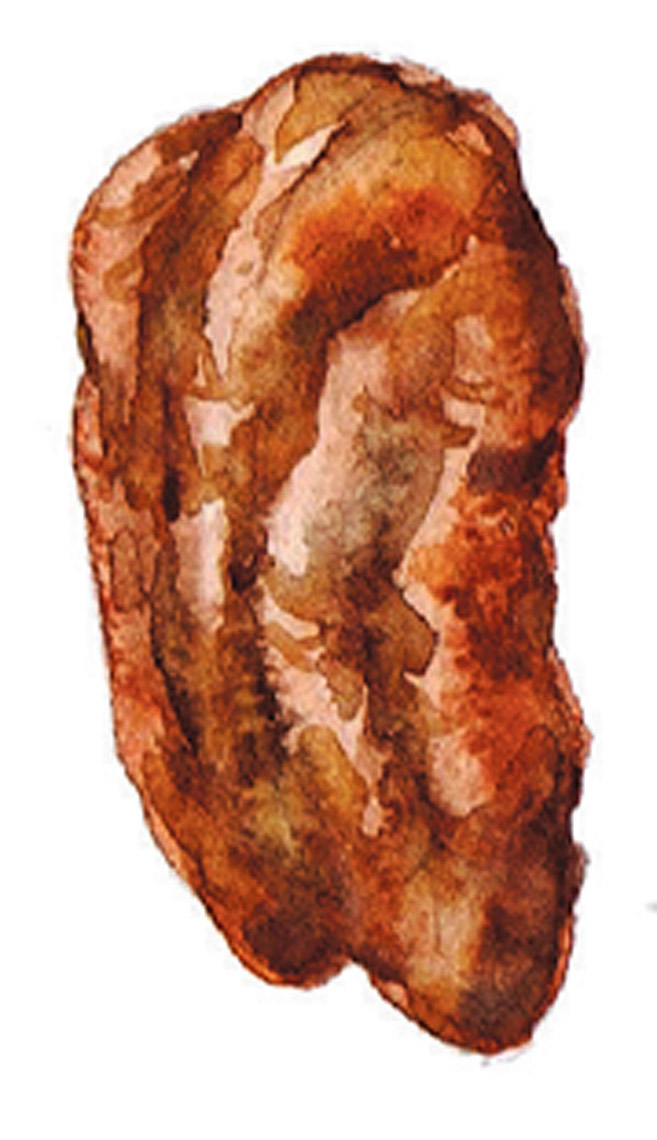
Only one nut is native to America: the pecan. In Louisiana, where it originated, the French stressed the second syllable. Moving west, they emphasized the first. Today, it’s your choice.

Raspberries— a cluster of over 100 individual fruits—are so delicate they are only touched by one pair of human hands and go directly into the container you buy.
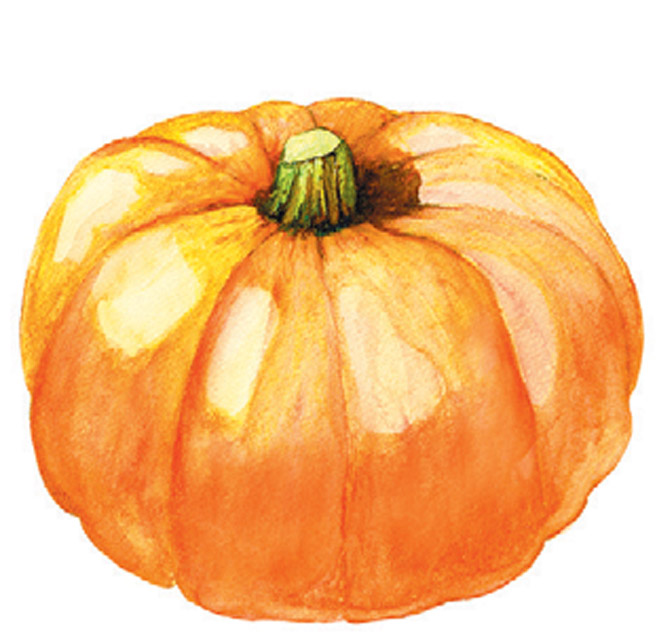
In autumn, the U.S. harvests 500 million pounds of a food Americans have no intention of eating: pumpkin. Today half of all U.S. pumpkins are grown for fall decoration around Halloween and Thanksgiving.




